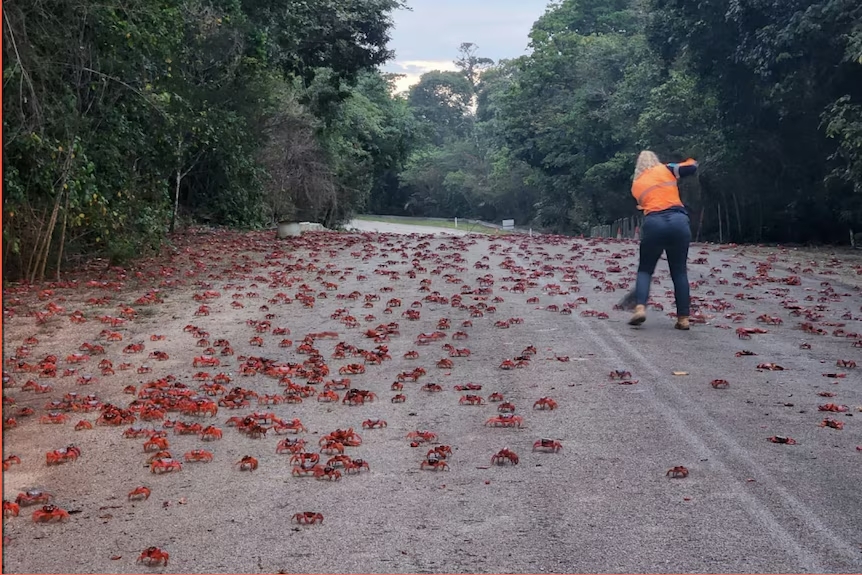

Around 100 million red crabs are emerging from their burrows and making their way to the coast for their annual breeding migration on Christmas Island. This migration is set to be one of the largest in recent years, especially after a severe drought in 2023.
Heavy rainfall has triggered the crabs' movement towards the sea, causing road delays and closures. In some areas, crabs are being cleared with garden rakes to allow vehicles to continue moving along the roads.
According to the head of the junior ranger program, Lyn Gaff, the crabs are everywhere this season and there is no escaping them on the 2,600km northwest of Perth island. “They’re scattered all over the island and they’re getting into every nook and cranny,” she said. “It’s actually quite bizarre seeing crustaceans running across a school oval, dashing into a patio or a living room. Sometimes they even end up going down the toilet.”
A spokesperson for Parks Australia said the annual red crab migration is in its early stages, and the migration route and numbers are still being assessed. “At this stage, the migration appears to be one of the biggest in recent times,” she said. “We expect very large numbers of crabs to spawn on the coast in the early part of the last week of November.”
Last year, the spawning season was delayed by almost four months due to dry weather, raising concerns among experts about reduced crab survival. It was the first time since Parks Australia began tracking crab movements in the 1980s that the migration had started in February.
“We’ve had some really heavy rainfall over the last couple of days, and that’s just the sort of rainfall they need to get them going, so it’s a relief,” Lyn Gaff noted.
The delayed season last year had raised concerns among the lead expert about reduced crab survival.
In the past, the red crab species suffered significantly from yellow crazy ants, which killed millions of the crustaceans since their introduction to the island in the 1990s. In recent years, crab numbers have recovered to more sustainable levels.
“Over the last five to eight years, we’ve seen some really healthy recruitments of baby crabs coming back,” Gaff said, noting that the population has recovered and is now nearly back to levels seen in the 1980s.
The red crab breeding season typically occurs in October or November, following a period of heavy rain. Males migrate to the beach first to soak up some moisture before burrowing and waiting for female crabs to attract them. After mating, females release up to 100,000 eggs each into the ocean during high tide.
Tourists from around the world travel to the Australian island in the Indian Ocean to witness the seasonal crab migration, which is not found anywhere else. All hotels on the island are already fully booked for November.
“It’s one of the largest animal migrations on the planet and one of the most amazing natural wonders of the world,” she noted.
 Blogs
Blogs
